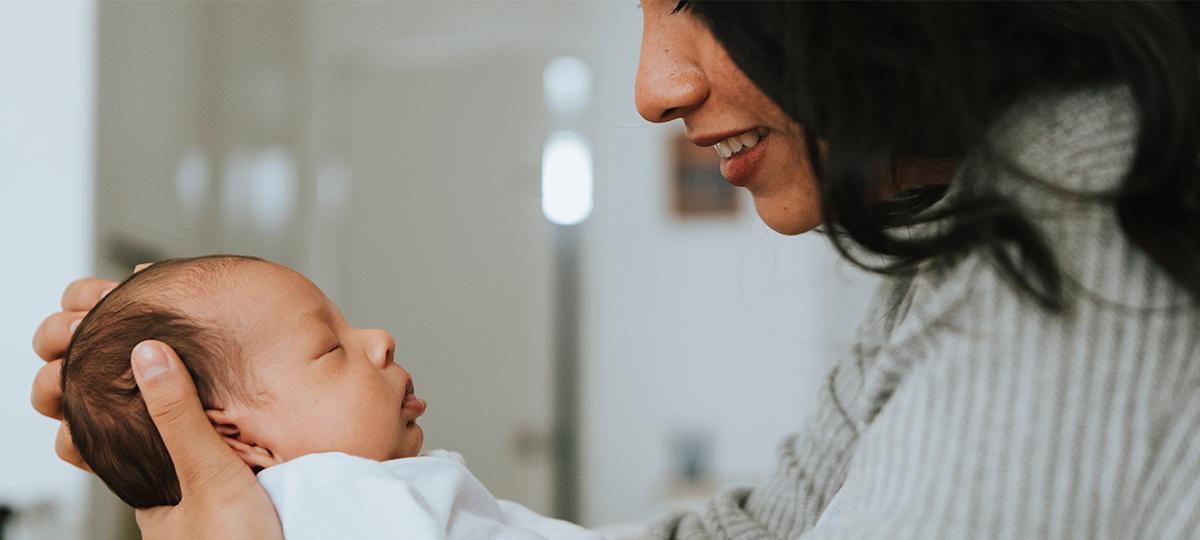Continuing Education
Massage Therapy Research CE
Research literacy helps you market your massage practice to clients and health care professionals.
Does massage therapy improve sleep in infants and their mothers?
By Martha Brown Menard, Ph.D., LMT, February 1, 2020

Sleep issues are common among infants and toddlers, and are estimated to occur in 20 to 30 percent of children under 3 years of age. When children experience poor sleep, mothers are also affected. While implementing a bedtime routine is often recommended, there is little research on its efficacy separate from other treatments, or on which components of a bedtime routine help to improve infant sleep. Previous research has shown that massage can have a positive effect on sleep for preterm infants, infants and young children. This study examined the impact of a massage-based bedtime routine on infant sleep, maternal sleep and maternal mood.
Participants were recruited through an independent clinical research organization and offered a financial incentive for completing the study. Inclusion criteria were that children had an identified sleep problem as noted by the mother, with all mothers endorsing that their child had a sleep problem that ranged from “small” to “severe.” Families were excluded if the child was reported to wake more than three times a night, stayed awake more than 60 minutes per night and had a total daily sleep duration of less than nine hours. Additional exclusion criteria were non-English speaking, current acute or chronic illness, and if the child was routinely bathed or had lotion applied in the hour before bedtime four or more times per week.
There were 123 families recruited and randomly assigned to continue their child’s usual bedtime practices during the study period (the control condition) or to implement a new nightly two-step bedtime routine: following a one-week baseline period during which mothers followed their child’s usual bedtime practices, for the next two weeks mothers included a massage (using a provided massage product in a blinded container and instructional materials including possible massage techniques), and quiet activities such as cuddling and singing a lullaby.
Instructions were given for massaging the baby’s chest, arms and hands, stomach, back, and legs and feet. Mothers continued to put their child to bed as they normally did, whether they put their child to bed awake or stayed with their child until asleep, and had lights out within 30 minutes of completing the massage, so that the only change was the new bedtime routine.
The massage intervention included 64 families, and 59 families participated in the control condition. Mothers were aged 18–45 years, with a mean age of 30.6 years; infants were aged 3–18 months with a mean age of 8.96 months, and 46 percent were male.
Outcomes measures included the Brief Infant Sleep Questionnaire (BISQ), completed on a weekly basis, and the Pittsburgh Sleep Quality Index (PSQ J), Epworth Sleepiness Scale, Edinburgh Postnatal Depression Scale, Brief Mood Introspection Scale, Parenting Stress Index and State-Trait Anxiety Inventory, completed at baseline and at the end of the study. All questionnaires were completed online.
Independent samples t-tests and chi-square tests were conducted to determine any pre-existing demographic or sleep differences between the control group and the intervention group; none were found. No differences were found across demographic variables, or baseline maternal or child sleep variables between the two groups.
Analyses showed a significant reduction in the number of nighttime wakings for children and mothers in the intervention group, but not for those in the control group. Overall, mothers perceived improvements in their child’s sleep for all variables measured for the intervention group, with no changes reported in the control group. Mothers reported improvements in bedtime difficulty, how well their child slept, child morning mood and their confidence in managing child sleep issues.
Mothers in the intervention group reported improved sleep quality as measured by the PSQI. There was also a decreased perception by mothers of sleep as a problem. The percent of mothers who reported their child had a sleep problem decreased from 78.1 percent at baseline to 60.9 percent after the first week of intervention, and to 46.9 percent at the end of the two-week intervention period. No significant differences were found for those in the control group. Mothers in the intervention group were also more likely to report feeling “somewhat” or “very confident” in managing their child’s sleep compared to the control group, and were highly likely to continue to use the prescribed routine.
There were no changes for the majority of mood and behavior scales for the mothers. No differences were found for depressive symptomatology (EPDS), daytime sleepiness (ESS), parenting stress (PSI) or state anxiety (STAI).
This study has several limitations. The massage instructions are not described. Many of the outcomes are selfreported, and there were no objective measures of infant and toddler sleep, such as actigraphy.
Results may have been due to participant expectations that sleep would improve, although not all self-reported outcomes showed improvement. While participants reported being satisfied with the bedtime intervention and likely to continue it, there was no longer term follow-up of reported massage effects or whether participants actually did continue the intervention.
In this study, massage therapy as part of a consistent bedtime routine appears to offer benefits to both infants and mothers related to improved sleep quality. Practitioners who have clients with young children and who report sleep difficulties may want to offer to teach the parents how to give a simple massage to their child as part of a bedtime routine.
Massage Therapy Research CE
Research literacy helps you market your massage practice to clients and health care professionals.
Is Massage Nature's Sleep Aid?
For millions of restless Americans, massage therapy could be the secret to a better night's sleep.